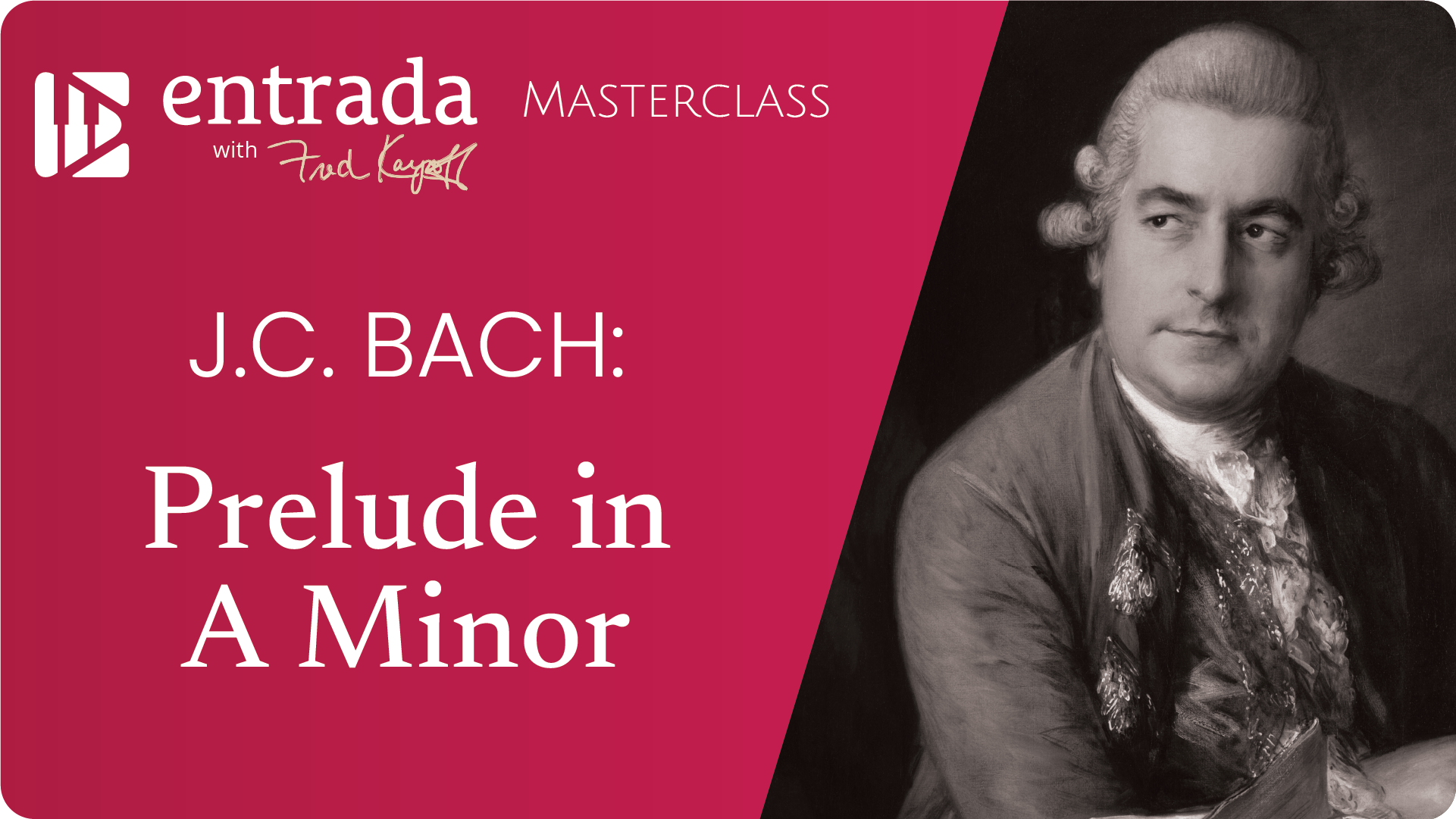
April 12, 2022
Masterclass: J.C.Bach: Prelude in A Minor
All postsJohann Christian Bach (1735-1782)
J.C. Bach, the youngest son of J.S.Bach, first moved to Italy around the time of his father’s death. Later, he emigrated to England in 1762 and soon became famous among the British public, known as “the London Bach.” The young Wolfgang Mozart came to London with his family in 1764 and stayed for 15 months. During that time, Mozart studied with Bach, with some later claiming that J.C.Bach was the only real teacher that Mozart ever had!

It’s certainly true that Mozart held J.C.Bach in the highest esteem, as evidenced by letters written by Wolfgang, his father, and his sister. After only one month of study, Leopold Mozart wrote: “What [Wolfgang] had known when he left Salzburg is nothing compared with what he knows now; it defies the imagination … right now, Wolfgang is sitting at the harpsichord playing Bach’s trios.”
Mozart met Bach again many years later, in Paris in 1778, after attending a performance of Bach’s opera, Amadis de Gaul. Mozart wrote to his father:
Mr. Bach from London has been here for the last fortnight…. You can easily imagine his delight and mine at meeting again; perhaps his delight may not have been quite as sincere as mine—but one must admit that he is an honorable man and willing to do justice to others. I love him (as you know) and respect him with all my heart; and as for him, there is no doubt but that he has praised me warmly, not only to my face, but to others, also, and in all seriousness—not in the exaggerated manner which some affect. (Letter, 27 August 1778)
As Mozart rarely wrote kind words about other musicians, this is high praise indeed.
J.C. Bach is also credited with advancing the development of sonata form in the works of Haydn and Mozart.
The little piece we’re featuring today by J.C.Bach is his elementary Prelude in A Minor, which works well as a study piece for his father’s well-known Prelude in C from the first book of the Well-Tempered Clavier. This Masterclass focuses on effective practice strategies, including blocking the arpeggiated figures into chords to listen for harmonic tension and release, and playing each right-hand measure with three-dimensional shaping for a musical performance.





Leave a Reply